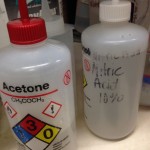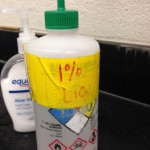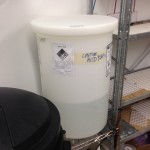The glassware used in experiments or used at any time must be cleaned by following EPA (Environmental Protection Agency) protocol. If the glassware is not throughly and properly cleaned, left over remnants, such as pesticides and residue from the crabs or shrimp, could possibly alter the outcome of experiments. After being taught how to properly clean the glassware in an acid tub (acid bath) and also with 1% Liquinox (soapy liquid), warm water, DI (deoxidized) water, acetone and 10% nitric acid, I was able to clean the glassware with little to no assistance.
Who We Are
What We Did
Over the course of completing my hours, I cleaned multiple types of glassware. Such types included glass jars (which held collected shrimp during experiments), small glass bowls (which held juvenile blue crabs during experiments), and large glass bowls (which held adult crabs during experiments).
What We Learned
By cleaning this glassware, I learned the importance of being precise and accurate in the most simplest daily chore. Properly cleaning this glassware will eliminate the probability of remnants affecting the overall outcome of an experiment.
Questions We Have
Who decided what the exact protocol for cleaning glassware to be?
Why does the glassware need to be cleaned in this exact way?
Are there any steps that are more important than the rest?
What if a step is skipped?
Connections to Teaching
This could be discussed during the beginning of the school year when learning about laboratory maintenance and procedures. The teacher could begin by asking if it matters whether or not equipment used during experiments should be clean or if it is okay for equipment to be dirty. The discussion could then lead to explaining that residue could ultimately result in compromised experiments.


